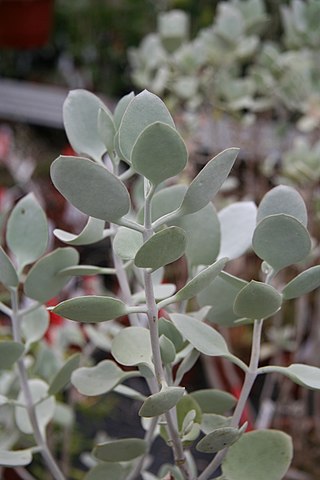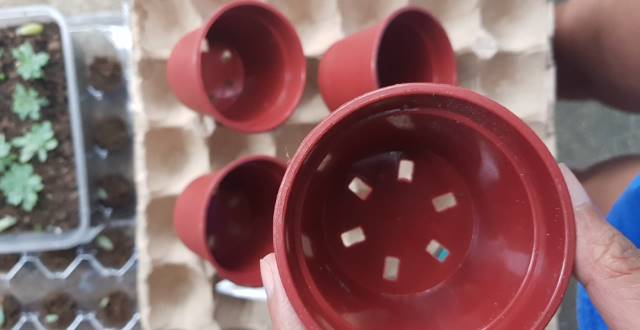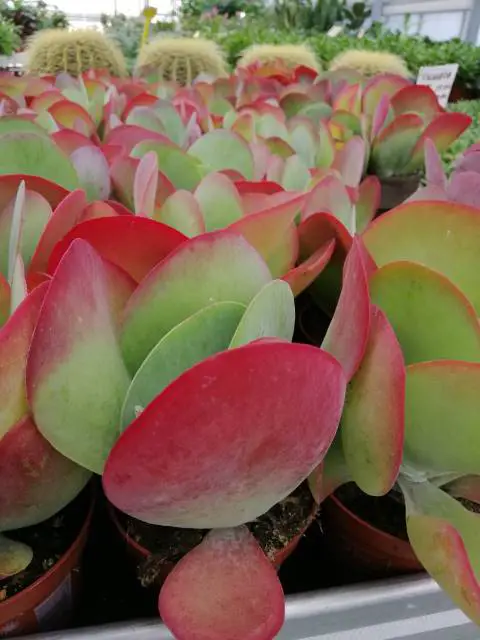Kalanchoe hildebrandtii is an amazing succulent that can be quite beautiful if well taken care of. The succulent has typical watering needs like other succulents and is very easy to maintain. It can be grown as an outdoor or indoor succulent. Indoor Kalanchoe succulents make a nice display in your home gardens.
Common Name:Kalanchoe hildebrandtii is commonly known as Silver Teaspoons.
Synonyms: Kalanchoe hirta, Kalanchoe gomphophylla.
Origin
Kalanchoe hildebrandtii is native to Southern and South-Western Madagascar.
Characteristics
Silver Teaspoons is a shrubby succulent that grows up to 3 feet (90 cm) in height. It has woody stems with beautiful, smooth, silver-grey leaves. It produces small, white bell-shaped flowers.
Blooming season
Silver Teaspoons blooms merrily in the spring season.
How to differentiate between Kalanchoe hildebrandtii and Kalanchoe bracteata?
Kalanchoe hildebrandtii and Kalanchoe bracteata are quite similar and often confused with each other. They can be differentiated by their blooms. Kalanchoe bracteata produces attractive red flowers. Kalanchoe hildebrandtii produces white flowers that are not as enchanting as the blooms of Kalanchoe bracteata.


How to Care for Kalanchoe hildebrandtii?
Like other Kalanchoe succulents, Kalanchoe hildebrandtii is easy to grow and maintain. It does not require a lot of attention and can tolerate a period of neglect very well.
Light requirements
Kalanchoe hildebrandtii thrives best in bright sunny locations. Keep your potted succulents under the partial sun to light shady locations. Indoor plants should be kept near bright sunny windows to enjoy plenty of exposure to sunlight.
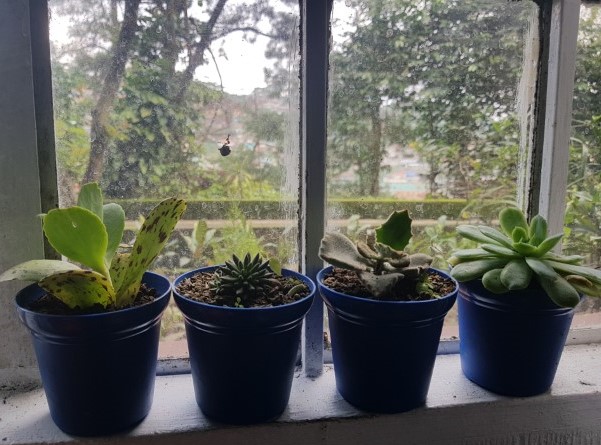
During the winter season keep your succulents near a south-facing window. Don’t keep your succulents under bright direct sunlight it can cause sunscald or sun injury.
If you don’t give your succulents enough exposure to sunlight, they may appear leggy or stretched out. In such a situation move your succulents immediately under a bright source of light.
Temperature and humidity
Kalanchoe hildebrandtii prefers to grow at warm temperatures and is extremely sensitive to low or below freezing temperatures. Extremely low temperatures can cause freezing injury or damage to the succulents. In case you are living in an extremely cold zone, it is recommended to keep the potted Kalanchoes indoors, while the outdoor succulents must be protected from freezing injury by covering with frost cloths.
Kalanchoe hildebrandtii grows well irrespective of the levels of humidity. Humidity only influences the watering needs of the succulents. When the humidity is high the succulents may need watering less frequently, while when the humidity is low the succulents will require watering more often. Generally, the humidity at room temperature is fine for the growth of Kalanchoe succulents.
USDA hardiness zones
Silver Teaspoons is grown as a hardy succulent in USDA hardiness zones 10a to 11b. The temperature range in these zones is 30 to 50 degrees Fahrenheit (-1.1 to + 10 degrees Celsius).
Potting Soil
Kalanchoe hildebrandtii likes to grow in a well-draining potting mix. You can buy a standard succulent mix from the market or you can prepare potting mix on your own by mixing 40 to 50 % sand with peat moss, clay, and compost.
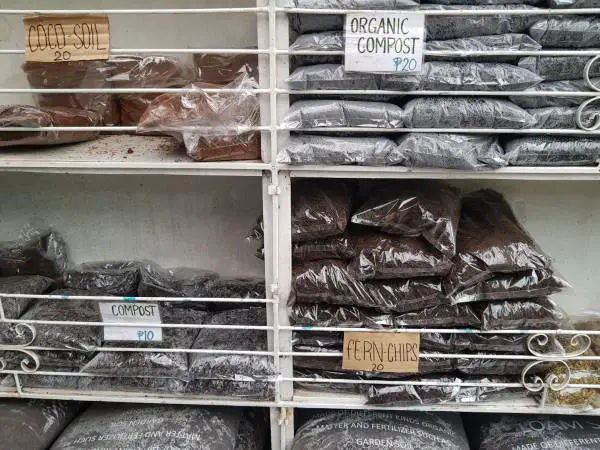
Always make sure the potting soil has a good drainage capacity. Use clay pots or glazed ceramics for growing your succulents because they have better drainage.
Watering Kalanchoe hildebrandtii
Kalanchoe hildebrandtii requires moderate watering and can’t stand overwatering at all. Water your succulents moderately using the ‘soak and dry method’. Give your succulents a drink full of water and let the soil dry out completely between watering. Insert your finger in the soil, if the top 2 to 3 inches feel completely dry, it is the right time to water your succulents.
However, if the soil is still moist wait for a couple of days more. Always apply water to the soil, don’t apply the water on leaves because it might make the leaves susceptible to rotting by encouraging fungal growth.
Strictly avoid overwatering because it can cause rotting and disintegration of roots. Moreover, it also encourages fungal growth on the succulents.
Kalanchoe hildebrandtii Pruning
Kalanchoe hildebrandtii is a shrubby succulent that does not grow too large. Therefore, it does not require frequent pruning and grooming. However, you can prune the plants to shape them as desired. You can also remove dead or damaged leaves or spent blooms to encourage new and healthy growth in the next season. Always use sharp and clean gardening shears for pruning your Kalanchoe succulents.
Kalanchoe hildebrandtii Propagation
Kalanchoe hildebrandtii can be easily propagated by using leaf cuttings. Remove several leaves from the healthy mother plant. Set aside the leaves at a warm dry location to develop callous. Place the leaves on a well-draining succulent potting mix and keep misting several times a day for the first few days. Avoid exposure to bright direct sunlight. The succulent will start rooting in 2 to 3 weeks. You can resume normal watering and light regimes once the succulents are established in the potting medium.
Repotting
Generally, Kalanchoe succulents can survive in the same pot for years. But it is recommended to repot your succulents in a fresh and fertile soil medium every 2 years. It will provide your succulents with a new growth medium that contains plenty of nutrients. It is also recommended to repot your Kalanchoe succulents every time you purchase them from a market.
Fertilization
Generally, Kalanchoe succulents don’t require fertilization. However, you can give your succulents an extra dose of nutrients through fertilization. It will make your plants grow even lush and healthier. Fertilize your succulents biweekly or monthly with a balanced dose of a standard succulent fertilizer or you can use slow-release pellets.
Problems and Insect Pests
Kalanchoe hildebrandtii is occasionally attacked by insects such as aphids, mealybugs, mites, and scales. However, these insects do not make a big problem. You can control the infestation easily by rubbing the parts of succulents with 70% isopropyl alcohol. You can also use a non-toxic insecticidal spray to get rid of these creepy creatures.
Another problem of Kalanchoe hildebrandtii is overwatering. Overwatering can cause the death of the succulents in no time. It disturbs the roots and causes their rotting and decay. When the root system is disrupted ultimately the whole plant will be disturbed. Therefore, always water your succulents moderately and use a well-draining soil mix.
Uses
Silver Teaspoons can be a great addition to your homes if displayed in a beautifully decorated pot. It can also be grown as an ornamental plant and in succulent gardens.
Featured Photo Credit : Michael Wolf, Penig, CC BY-SA 3.0 https://creativecommons.org/licenses/by-sa/3.0

